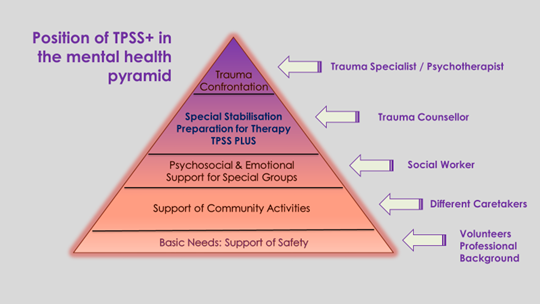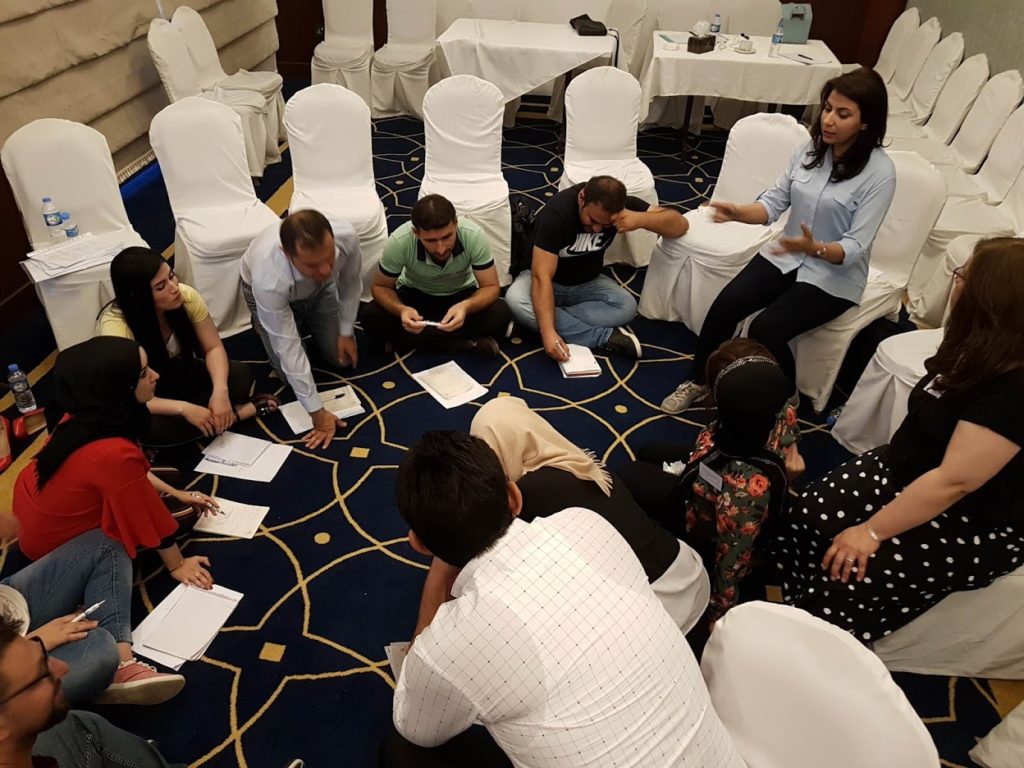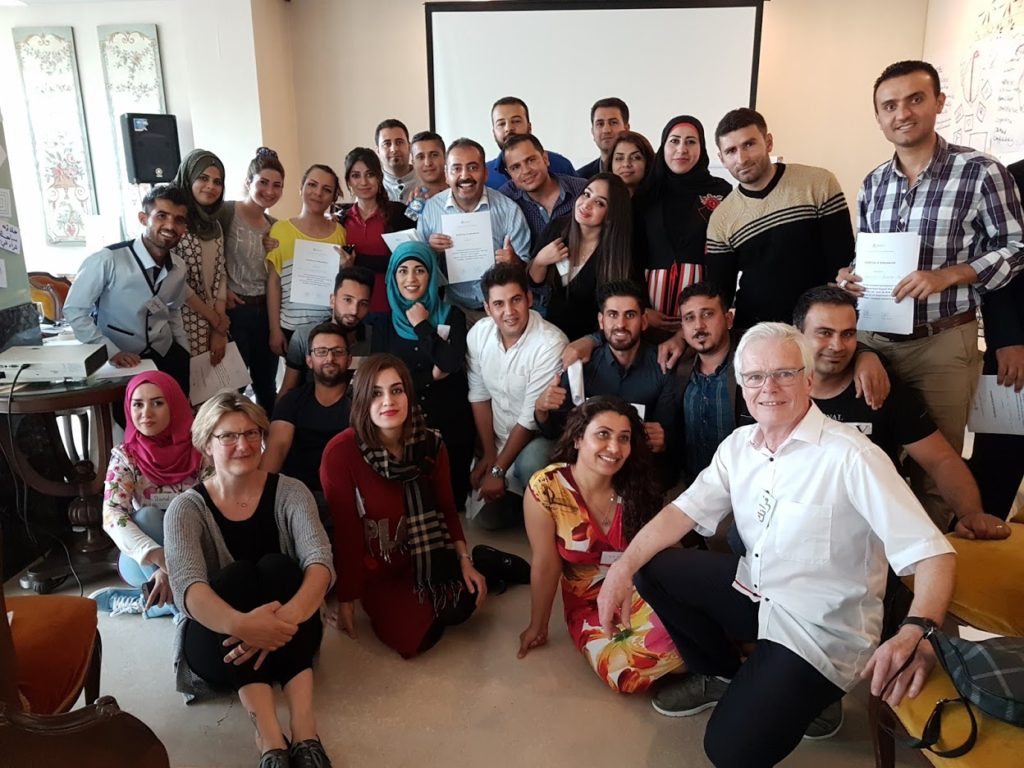Trauma Psychosocial Support Plus Course Overview (TPSS+)
Program Description
The TPSS+® Training Course is a psychosocial-support training program developed by Trauma Aid Germany*. It aims to teach psychosocial and mental health service providers, first, the impact of negative life events on people’s psychological and social well-being, and second, the way to deal with traumatized people who have experienced a crisis or crises on a massive or on an individual level. This course also trains the service providers how to use trauma-focused interventions which can be used to reduce the suffering of people with different age groups, needs, and backgrounds.
The TPSS+® Training Course follows the Adaptive Information Processing (AIP) model that was developed by the late Dr. Francine Shapiro who theorized that much of people’s psychological problems and maladaptive behaviors are the results of their inability to mentally process the memories of their traumatic life experiences. As a result, those memories become stuck, and people will end up perceiving themselves and others negatively and have problems coping well with themselves and others.
Some of the trauma-focused interventions used in the TPSS+® Program are inspired by the theoretical framework of EMDR therapy (Eye Movement Desensitization and Reprocessing) which believes that our brain has a self-healing mechanism. When a traumatic memory gets stuck, this self-healing mechanism needs to be stimulated.
The “Plus” in this training course is the adaptation of some techniques from EMDR therapy that can be taught and applied without risks to beneficiaries.
The TPSS+® interventions are NOT considered therapeutic in the formal sense; they are intended to do the following:
(1) increase beneficiaries’ awareness,
(2) reduce their distress level,
(3) increase their resiliency,
(4) teach them self-care.
The TPSS+® offers preliminary special steps to deal with the traumatic experiences.

TPSS+® Curriculum and Learning Objectives
- Trauma detection
- Psychoeducation in Trauma
- Trauma-focused perspectives
- Trauma stabilization
- Self-perception and self-care for service providers
- Recognition of systemic relationships
- Crisis intervention
- Dealing with special populations
- Working with groups
- Partial / moderate trauma intervention
- Models and structures of supervision and support systems
The TPSS+® Training Course is composed of 3 Levels. Each level consists of:
- 5-days Workshop
- 2-days of Group Consultation
- Field practicum
- Case presentation
Part 1 – Learning Objectives:
The participant is able to:
- Describe the impact of traumatic events on adults and children.
- Explain the difference between small t- and big T- trauma.
- Name psychological scales that can be used to assess traumatic suffering and explain their purpose of usage.
- Apply several stabilization techniques.
- Demonstrate how to apply distancing techniques.
- Administer guided imagery exercises in accordance with the needs of the beneficiary.
- Adapt and modify different exercises and methods depending on the age of children.
- Develop ideas on how to detect and implement resources as aspects of stabilization.

Part 2 – Learning Objectives:
The participant is able to:
- Apply the 4-field-scheme after the stabilization phases.
- Name and present to the group a self-care technique of her/his choice.
- Demonstrate how to use peer supervision principles as taught in the course.
- Describe the dynamics in family systems and how to identify them up in a family interview session.
- Explain how trauma impact children/adolescents differently depending on their age.
- Write narratives for traumatized children / adolescents / adults.
- Explain, in trauma-sensitive way, what is “play” and know how to use it.
- Demonstrate how to use psychoeducation and stabilization in a group-setting.

Part 3 – Learning Objectives:
The participant is able to:
- Demonstrate how to use the pendulation technique for problem solving.
- Demonstrate how to use the absorption technique for problem solving.
- Structure a counselling process.
- Lead a peer-supervision according to the structure presented.
- Identify central dynamics in grieving process and prolonged grieving processes.
- Describe how the basic ideas concerning trauma and grief can be used in the context of her/his work.
- Explain main the characteristics of Complex PTSD.
- Explain how to use self-care techniques appropriately for personal well-being.

N.B. The TPSS+® program will be adapted to the needs of the participants and to the issues of each country where TPSS+ is taught; therefore, the order of topics and content might change.
* Trauma Aid Germany is a non-profit organization founded in 2000; it provides trauma projects in crisis areas by offering professionals training in psycho-traumatology and EMDR Therapy. (https://www.traumaaid.org/)
